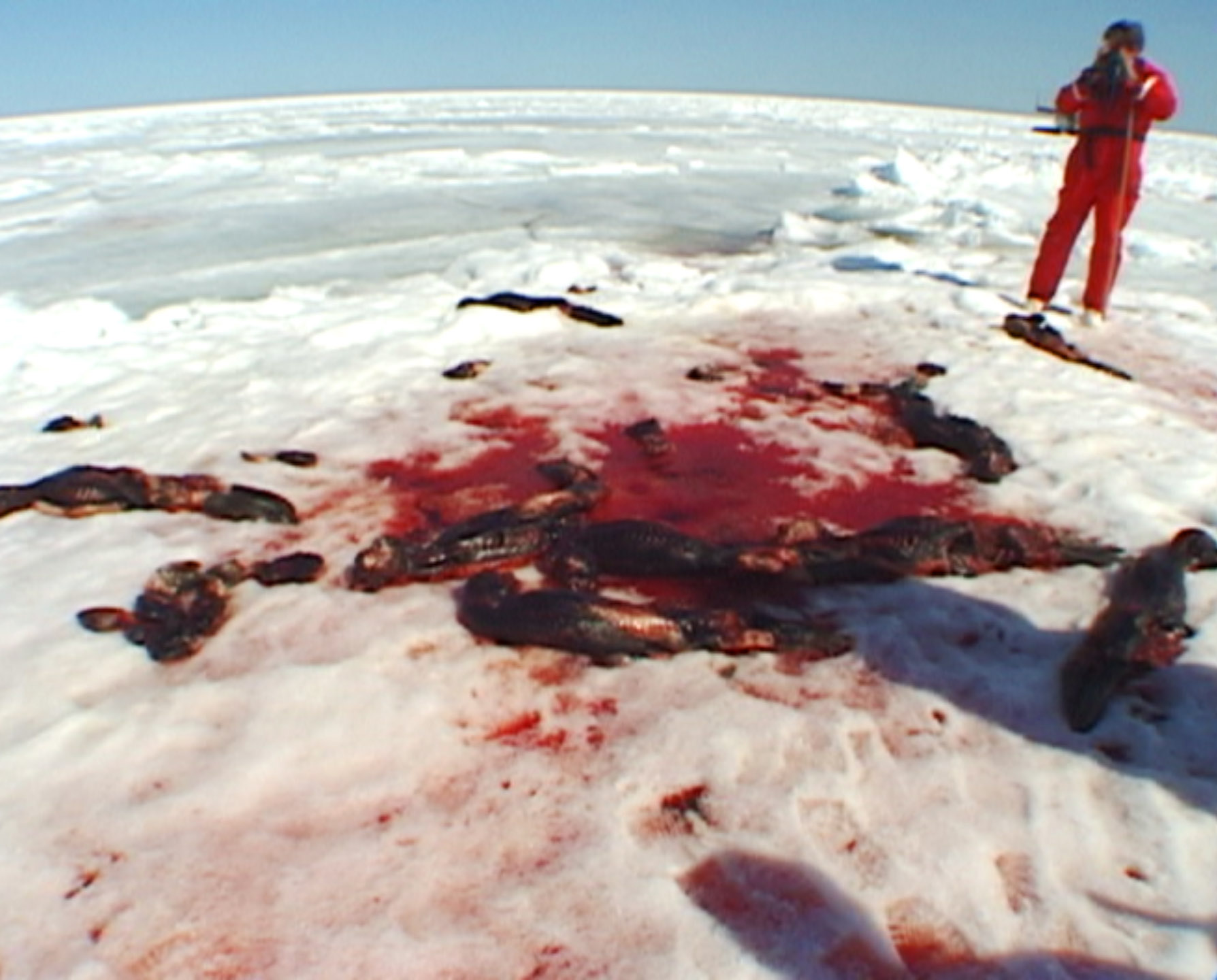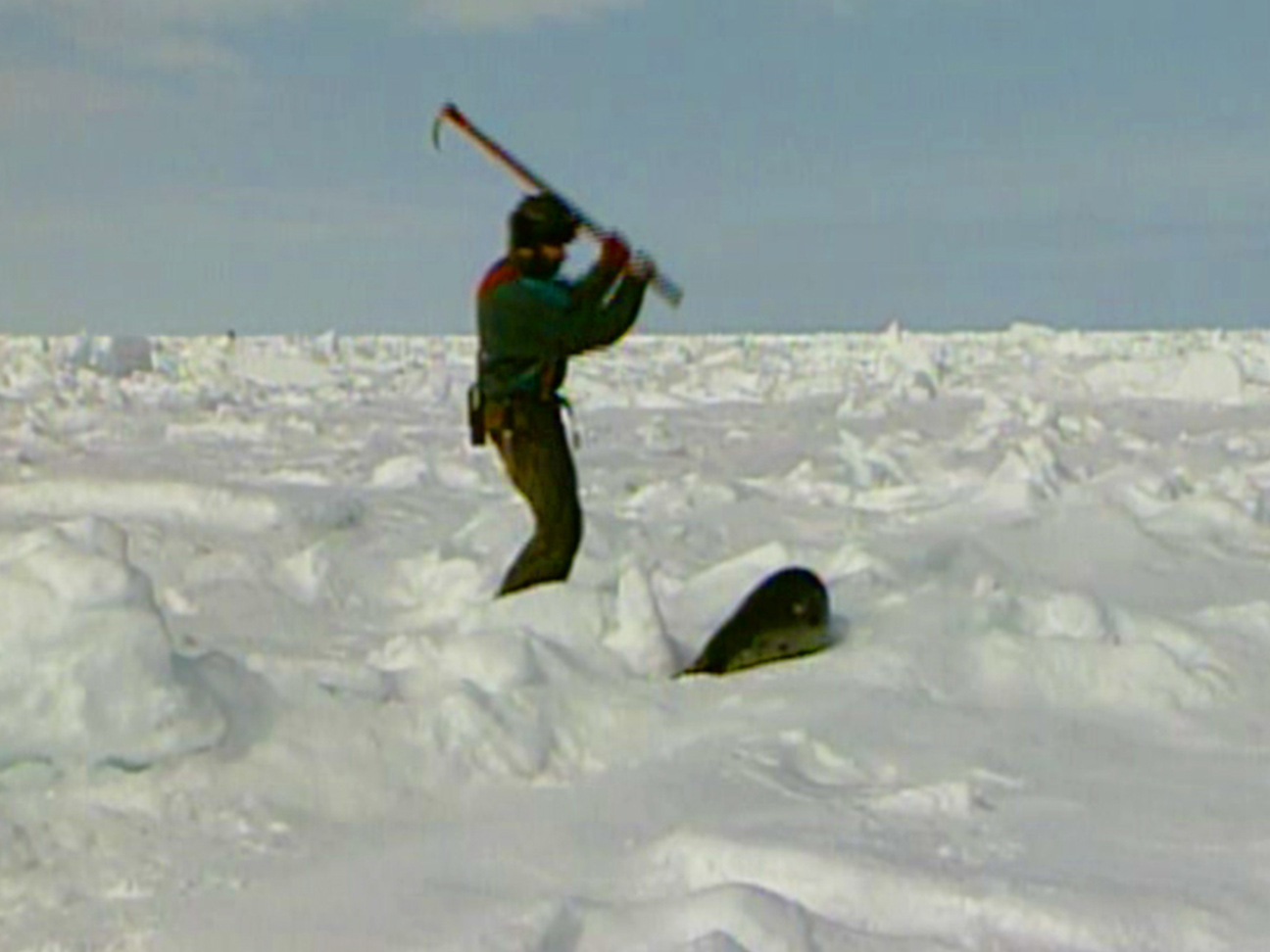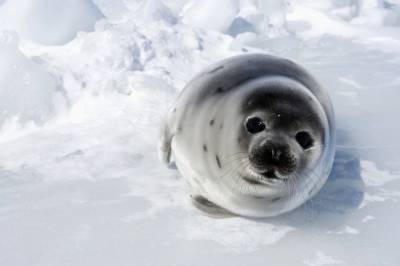LCA Blog
3 Myths Canada’s Commercial Seal Hunt Industry Wants You to Believe
Canada’s sealing industry is trying to fool the public into believing that their brutal hunt is necessary, when in fact it is an economic drain and causes immense suffering to the animals. It’s time to debunk some of the most common myths about the seal hunt:
Myth: Seals are overpopulated and threaten the survival of other species
Fact: The seals are not overpopulated – and the fact that harp seals aren’t currently endangered hardly makes them an invasive species.
Overhunting in the 1950s and 60s caused the harp seal population to plummet to extinction levels by the 1970s. After facing several years of activist pressure, the Canadian government instituted a quota system in 1971 to stabilize the seal population, which has since rebounded to a sustainable level. Today, the recovered seal population is blamed for a decreased population of Atlantic cod fish species – but experts dispute this theory. Seals, like other predatory species, are used as a scapegoat for an out-of-control fishing industry responsible for the severe depletion of ocean life.
Sealers argue that if the hunt were stopped, competition among seals for food would cause mass starvation. But if anything, it is humans who pose the greater threat to seals – not only from the annual commercial hunt, but also by overfishing their food supply (cod fish), poisoning the oceans with heavy metals and other contaminants, and warming the planet due to climate change, reducing the seals’ natural habitat.
Myth: By opposing the seal hunt, you threaten the traditional indigenous way of life
Fact: For years, defenders of Canada’s commercial seal hunt have attempted to coopt sympathies for the indigenous peoples of North America as a cover for their industry’s horrific practices. But the indigenous seal hunt accounts for only three percent of the total number of seals killed in a given year. The vast, vast majority of seals are killed by commercial fisherman, not indigenous peoples, and animal rights groups are solely targeting the commercial hunt.
 Seal Carcasses on the ice Seal Carcasses on the ice |
Myth: The commercial seal hunt is humane
Fact: Even the broadest definition of the word “humane” would never include the methods of slaughter used in the commercial seal hunt. Harp seals are routinely shot, bludgeoned, impaled, suffocated, mortally wounded, drowned, disemboweled, and skinned alive in the commercial seal hunt.
 Sealer striking seal with hakapik Sealer striking seal with hakapik |
While sealers still use the hakapik to club seals to death by striking them in the skull, many use rifles to shoot seals from rocking boats at a distance. Neither method is precise – many seals are shot and left to die uselessly when conditions prove too dangerous to sealers to retrieve their pelts. The truth is there is nothing humane about Canada’s commercial sealing industry.
When you subscribe to the blog, we will send you an e-mail when there are new updates on the site so you wouldn't miss them.












